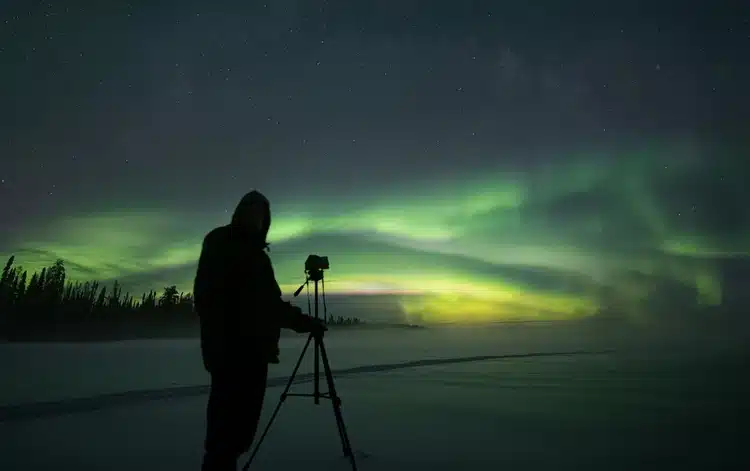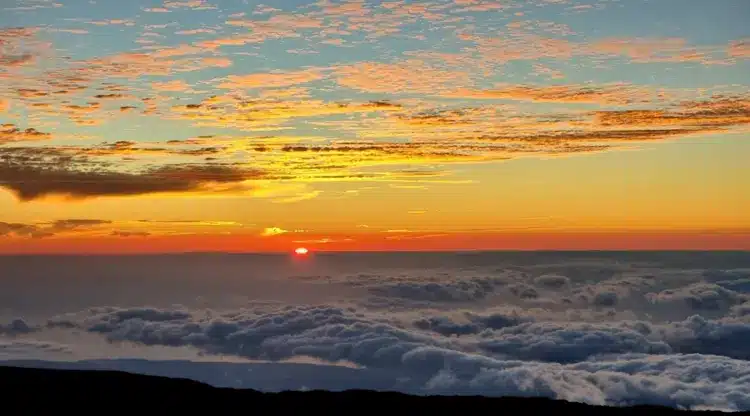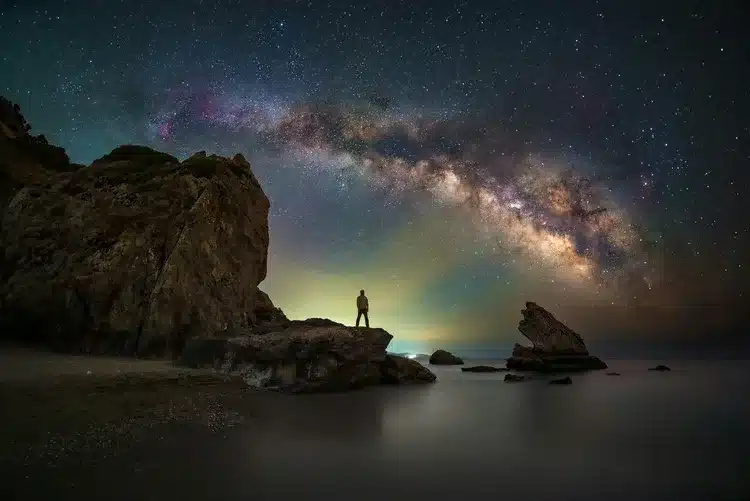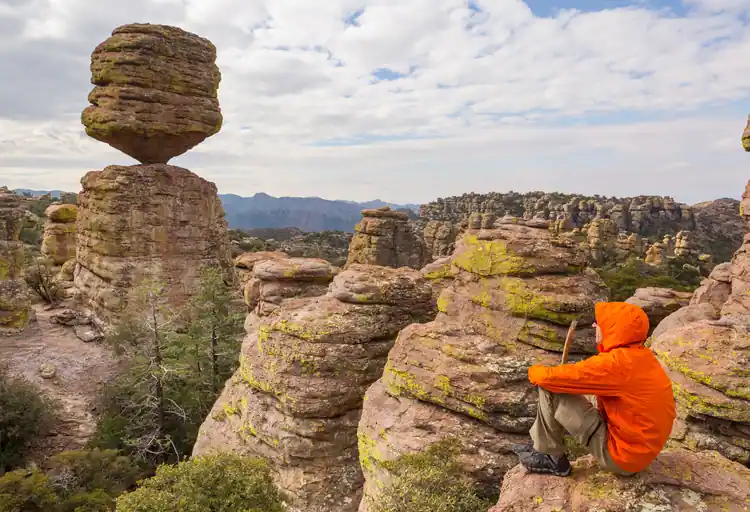Capturing the Night Sky: Why Astrophotography Software Matters

Let me tell you, the first time I saw my raw astrophotography images, I nearly threw in the towel. They were… well, let’s just say they weren’t exactly wallpaper material. Dim, noisy, and about as inspiring as a plate of cold oatmeal.
That’s when I stumbled into software for astrophotography. These digital wizards can turn those dull, grainy shots into breathtaking celestial masterpieces. It’s like having a magic wand for your star photos!
Now, I’m no tech genius, but I’ve learned that good astrophotography software is worth its weight in stardust. Look for programs that can stack images (trust me, it’s not as weird as it sounds), reduce noise (because space shouldn’t look like TV static), and align stars (they’re not supposed to look like comets… unless they are comets, of course).
Table of Contents
Top 5 Astrophotography Software Options for 2024
Alright, space cadets, we’re diving into the cream of the crop when it comes to astrophotography software. I’ve spent more nights than I care to admit fiddling with these programs, so you don’t have to!
Adobe Photoshop: Versatile Tool for Astro-Editing

Photoshop is like that Swiss Army knife you keep forgetting you have. Turns out, it’s not just for making your selfies look flawless – it’s a powerhouse for astrophotography too!
If you’re already familiar with Photoshop, you’re halfway there. The interface will feel like an old friend, and with a plugin for nearly everything under the sun (or stars, in this case), you’ll have endless possibilities. By experimenting with layers and masks, you can uncover hidden details in nebulae that you never even knew were there!
The downside? It’s not cheap, and that subscription model can be a pain in the asteroid. But if you’re already using it for other photography, it’s a no-brainer to add it to your astrophotography toolkit.
PixInsight: The Professional’s Choice

PixInsight is like the Ferrari of astrophotography software. It’s sleek, powerful, and… well, let’s just say it’s not for the faint of heart. It may feel like piloting a spaceship the first time you open it, but once you get the hang of it, the results are truly out of this world!
This bad boy packs some serious punch with its advanced algorithms for noise reduction and star alignment. It’ll make your photos pop like you wouldn’t believe. Fair warning though – the learning curve is steeper than a black hole’s event horizon. But stick with it, and you’ll be producing images that’ll make NASA jealous.
As for pricing, well, quality doesn’t come cheap. But they do offer a trial, so you can test-drive before you commit. Trust me, it’s worth every penny if you’re serious about your cosmic captures.
Astro Pixel Processor: Rising Star in Image Processing
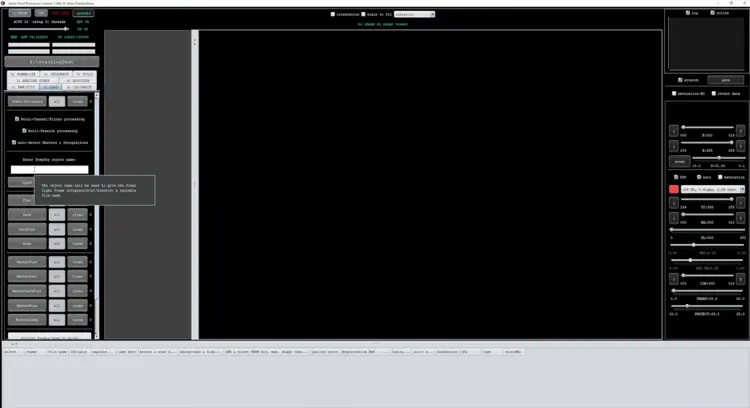
Astro Pixel Processor is like that overachieving student who’s good at everything. Deep-sky imaging? Check. Planetary photography? Double-check.
What really sets APP apart is its GPU acceleration. In simple terms, it’s incredibly fast – fast enough that you might blink and think something went wrong when it finishes processing! With its different pricing tiers, you can choose a plan that fits your needs without paying for unnecessary features.
Once you see what this software can do, you’ll be hooked faster than you can say “light-year”.
DeepSkyStacker: Best Free Option for Beginners
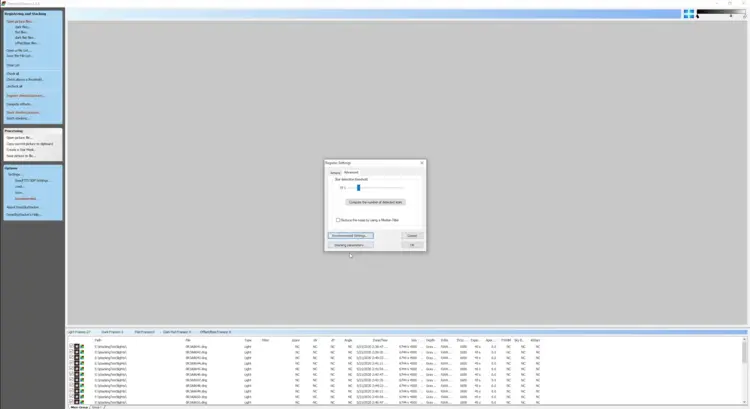
Now, DeepSkyStacker, it might not be flashy, but it’ll get you where you need to go – and it won’t cost you a dime!
This little gem is perfect for beginners. It’s as easy to use as buttering toast, and it plays nicely with all sorts of image formats. When you use it to create your first stacked image, you’ll feel like a kid on Christmas morning when you see the result!
Sure, it might not have all the bells and whistles of the paid options, but for getting your feet wet in the astrophotography pool, you can’t beat free. And hey, who doesn’t love a good bargain?
Starry Sky Stacker: Mac-Friendly Astro Software

Apple fans, rejoice! Starry Sky Stacker is here to prove that Macs can do astrophotography too. This little powerhouse is optimized for macOS, and it’s slicker than a greased-up photon.
The interface is so user-friendly, it feels like it’s reading your mind. But don’t let its simplicity fool you – under the hood, it’s packing some serious processing muscle. I’ve used it to stack hundreds of images without breaking a sweat (or crashing my computer).
Best of all, it’s a one-time purchase. No subscriptions, no hidden fees – just pay once and stack to your heart’s content. It’s refreshing in a world of endless subscriptions, isn’t it?
Essential Features in Astrophotography Post-Processing Software
Alright, let’s talk shop. What should you be looking for in your astrophotography software? There are a few key features you’ll definitely want to have in your toolkit.
First up, image stacking. This is like the secret sauce of astrophotography. It takes multiple exposures and combines them to bring out all those juicy details. Without it, you’re just shooting in the dark.
Next, noise reduction algorithms. Space is noisy, but your photos don’t have to be. The right software will reduce that graininess, making your images smooth and detailed in no time.
You’ll also want solid color calibration tools. Ever take a shot of a nebula, only for it to come out looking like a weird swirl of colors? With proper calibration, your reds will stay vibrant, and your blues true to life.
Finally, star alignment and registration are crucial. Even if your telescope mount isn’t perfect, these tools keep everything in place, ensuring your stars are sharp and not stretched across the frame.
Choosing the Right Astrophotography Software for Your Needs
Picking the right software is like choosing a telescope – it’s all about your needs and goals. Are you a beginner just dipping your toes in the cosmic waters? Maybe start with something user-friendly like DeepSkyStacker. Been at it for a while and ready to take your images to the next level? PixInsight might be calling your name.
And, of course, consider your budget. Astrophotography can quickly become expensive, so think about what makes sense for your wallet. Some programs offer one-time purchases, while others require a subscription, so plan accordingly.
One more tip: always check that the software is compatible with your gear! There’s nothing worse than investing in powerful software only to find out it doesn’t work with your camera or operating system. A quick compatibility check will save you a lot of hassle.
Tips for Getting the Most Out of Your Software for Astrophotography
Here’s a golden rule: start with good data. No amount of post-processing magic can completely save a poor image. It’s like trying to turn a quick snack into a gourmet meal—it’s not impossible, but it’s not ideal either.
For beginners looking to streamline their setup process, consider using tools like AstroShot Assistant, which can quickly provide optimal camera settings based on your target, helping you nail those ISO, shutter speed, recommended aperture and more values right from the start.
Don’t be afraid to experiment. Part of the fun is in the process, and every attempt gets you closer to that perfect shot. Play around with different stacking methods, noise reduction settings, and color balances. Before long, you’ll be amazed at what you can achieve.
And here’s a pro tip: join online astrophotography communities. Not only will you pick up great tips and tricks from others, but you’ll also get to share your journey with people just as passionate about the stars as you are.
From Starry Nights to Stunning Sights: Elevate Your Captures
We’ve taken quite the journey through the cosmos of astrophotography software, from professional-grade powerhouses to beginner-friendly gems. The right software can truly elevate your images, turning ordinary snapshots into breathtaking celestial scenes.
Remember, even the best astrophotographers started right where you are now—experimenting, learning, and perfecting their craft. So, if your first attempts don’t turn out as expected, don’t sweat it. Stick with it, keep experimenting, and most importantly, keep looking up.
The stars are waiting for you to capture their beauty! So grab your camera, fire up your software, and create something spectacular. And when you snap that perfect image of the Andromeda galaxy or the Orion nebula, don’t forget to share it. You might just inspire someone else to embark on their own stargazing adventure.
Happy shooting, and clear skies!



